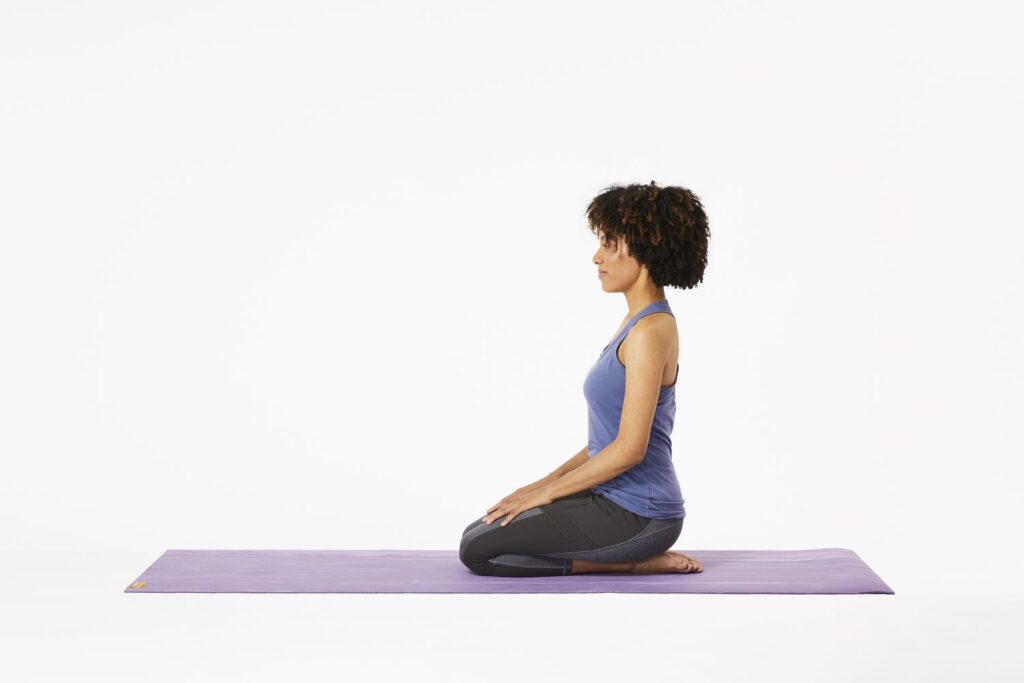How to Start a Diabetes Friendly Yoga Routine?
- admin
- August 11, 2025
- 4:44 am
- No Comments

If you are wondering whether yoga can do more than loosen tight hips, you are in the right place.
A growing body of research suggests yoga can help lower stress that causes type 2 diabetes, improve sleep quality, enhance insulin sensitivity, and nudge fasting and post-meal glucose in the right direction.
The secret is not fancy poses—it is a steady, well-timed routine that plays nicely with your meals and medications.
This guide walks you through a safe, practical, and genuinely doable plan to get started and stay consistent, whether you are managing type 1, type 2, or prediabetes.
Article Index
- Why yoga for diabetes: what the evidence suggests
- Safety first: meds, lows/highs, and smart modifications
- Your first week: a simple, repeatable plan
- Breathwork that steadies stress and glucose
- A gentle pose sequence you can trust
- Timing yoga with meals, insulin, and sleep
- Track progress and fine-tune your plan
- Special situations: neuropathy, joint pain, and fatigue
- Pairing yoga with walking and strength for better results
- Troubleshooting when sugars misbehave
Why yoga for diabetes: What the Evidence Suggests?
Yoga blends light-to-moderate movement with deliberate breathing and relaxation—three levers known to influence glucose control.
Trials and reviews report meaningful improvements in HbA1c, fasting glucose, post-meal readings, lipids, and perceived stress when yoga is practiced several days per week.
The mechanisms are straightforward: slower breathing eases sympathetic drive; gentle poses support circulation, mobility, and muscle engagement; and the relaxation response can help tame stress hormones that otherwise push sugars upward.
Many participants also sleep better after evening sessions, and better sleep supports next-day insulin sensitivity. The takeaway is encouraging: you do not need long, sweaty classes to see benefits.
Ten to twenty minutes most days—especially when you pair movement with calm, nasal breathing—can create a noticeable shift over weeks.
Think of yoga as an “amplifier” for the good habits you already know help: regular meals, light activity after eating, sufficient water, and consistent bedtimes.
Keep expectations realistic, track your readings, and let the routine compound.
Safety First: Meds, Lows/Highs, and Smart Modifications
A quick chat with your clinician is a wise first step—especially if you use insulin or sulfonylureas, have cardiovascular disease, retinopathy, or neuropathy, or you are considering hot yoga.
Check glucose before practice.
If you are on the low side, take a small carb snack per your care plan; if you are very high or have ketones, postpone exercise.
Keep fast-acting carbs nearby, and note how long after dosing you feel most steady—then schedule gentle sessions there. Protect your feet with soft flooring or socks if you have reduced sensation.
With retinopathy, skip strong inversions and long breath-holds unless you have been cleared. Start with shorter sessions, avoid pain (especially sharp or radiating pain), and use props to create stable bases—chairs, walls, and blocks are your friends.
Aim for nasal breathing throughout; mouth breathing can make sessions feel harder than they are. Finally, remember that “easy and repeatable” beats “intense and sporadic.”
You are playing the long game.
Your First Week: a Simple, Repeatable Plan
Your mission this week is consistency, not heroics. Commit to 10–15 minutes per day so the habit sticks without soreness.
- Days 1–2 (10–12 min): Seated diaphragmatic breathing (2 min). Cat–Cow (60–90 sec). Child’s Pose (60 sec). Supine hamstring stretch (1 min/side). Bridge (60–90 sec). Savasana (3–4 min).
- Days 3–4 (12–15 min): Add Standing Mountain to Half Forward Fold (2 min), Low Lunge (1 min/side, knee padded), gentle Supine Twist (1 min/side).
- Days 5–7 (15 min): Keep the above and finish with 3–4 minutes of guided relaxation or a quiet body scan.
Log four quick data points: pre-yoga glucose, post-yoga glucose (about 45 minutes later), perceived stress (0–10), and sleep quality that night.
This “mini-dashboard” shows what is helping and when. By the weekend, you shall have a diabetes-friendly yoga sequence for beginners you can run on autopilot when life gets busy.
Breathwork that Steadies Stress and Glucose
Breathing well is the easiest win in this whole plan.
Slow, nasal, and rhythmic breathing tones down the “fight or flight” response that can otherwise nudge sugars up. Try this six-minute set, once or twice a day:
- Box breathing—inhale 4, hold 4, exhale 4, hold 4—for two minutes.
- Alternate-nostril breathing (no force, no strain) for two minutes.
- Humming exhale (bhramari) for two minutes, then sit quietly for 30 seconds.
That’s it!
You can drop this into a break between meetings, after a tense call, or before bed. If you like numbers, track your heart rate before and after; the gentle drop you shall see is a good sign.
As per BestDietarySupplementforDiabetics, “Keep the vibe calm—never push breath retention or fast techniques on days you feel off”.
With regular practice, this becomes effective pranayama for blood sugar control without needing any special equipment.
A Gentle Pose Sequence You can Trust
Early wins come from uncomplicated shapes that mobilize your spine and hips while inviting relaxation.
Here is a 15–18 minute flow you can repeat:
- Seated posture check (30 sec): Tall spine, soft jaw, shoulders down.
- Cat–Cow (60–90 sec): Link movement to breath.
- Thread-the-Needle (1 min/side): Easy thoracic rotation.
- Low Lunge (1 min/side): Back knee padded, hands on blocks, chest soft.
- Half-Split (45 sec/side): Hinge at hips, keep the spine long.
- Bridge (60–90 sec): Engage glutes, avoid craning the neck.
- Supine Twist (1 min/side): No yanking knees; let gravity help.
- Legs-up-the-Wall (2–3 min): Great downshift.
- Savasana (3–4 min): Full-body release.
If you want a reference point for building classes or searches, these are among the best yoga poses for type 2 diabetes because they are gentle, scalable, and easy to recover from.
Use props liberally—comfort invites consistency.

Timing Yoga with Meals, Insulin, and Sleep
Timing is a powerful dial to turn. Many people find a short morning session acts like a warm start for the day’s metabolism.
A 10–15 minute morning yoga routine for insulin resistance can help shake off grogginess and set a calmer tone.
After meals, even three to five minutes of upright, easy movement—standing Cat–Cow at a counter, shoulder rolls, supported Chair Pose—followed by two or three minutes of quiet sitting can blunt big swings.
That is essentially post-meal yoga for better digestion and energy.
Evenings are perfect for breath-led, down-regulating practices that cue your nervous system for sleep: two minutes of alternate-nostril breathing, two minutes of humming exhale, and a few minutes in Legs-up-the-Wall or supported Child’s Pose.
Better sleep often means better numbers tomorrow morning.
Track Progress and Fine-Tune your Plan
Make your health data work for you. Keep a tiny log for four weeks: fasting glucose twice weekly, one or two post-meal checks on rotating days, and notes on stress, sleep, and session timing.
Every Sunday, scan for patterns.
Do evenings improve your next-morning reading?
Do post-dinner sessions help with late-night snacking?
If yes, double-down. If no, experiment—shorter morning movement plus evening breathwork might be your sweet spot.
As weeks pass, you can label your practice as home yoga for HbA1c reduction, not because any single session is magical, but because consistent, low-stress movement and breathing gently stack up.
When your log shows a few better weeks in a row, talk with your clinician about whether any medication adjustments are appropriate.
Special Situations: Neuropathy, Joint Pain, and Fatigue
If you have nerve pain or reduced sensation in your feet, stability and cushioning come first. Choose safe yoga for diabetic neuropathy: seated or supine flows, wide stances, chair-assisted standing poses, and lots of padding under knees and ankles.
Check your feet after practice. For knee or hip discomfort, swap kneeling lunges for strap-assisted hamstring and hip stretches on your back, and use a chair for balance in standing poses.
On flare or fatigue days, five minutes of breathwork plus Legs-up-the-Wall is a perfectly valid session. If you live with retinopathy, avoid extended breath-holds and strong inversions unless cleared by your eye specialist.
And if you ever feel dizzy, short of breath, or experience chest pain, stop and seek medical advice or consult diabetes support groups. The goal is to finish each session feeling calmer than when you started—never wrung out.
Pairing Yoga with Walking and Strength for Better Results
Yoga plays beautifully with other simple habits.
A 10–15 minute walk after your two biggest meals can further smooth post-meal spikes.
Add two short, strength-focused sessions weekly—sit-to-stands, wall push-ups, light rows with a resistance band. Also add swimming to reduce blood sugar levels naturally.
Strength work increases muscle’s capacity to take up glucose, while yoga keeps you limber, balanced, and less stressed.
If time is tight, stack habits: five minutes of breathing, eight minutes of gentle flow, and a two-minute “movement snack” after dinner.
That is a 15-minute investment with an outsized return. Bonus: when your routine reduces aches and stiffness, you are more likely to stay active on non-yoga days, compounding the benefit.
Troubleshooting when Sugars Misbehave
- Lows during or after yoga: Shorten the session, avoid deep forward bends if they bring on vagal symptoms, and consider a small pre-session snack when your reading is near the lower edge of your target. Keep glucose tabs handy.
- Highs that won’t budge: Try two short sessions instead of one long one—eight minutes in the morning and eight in the evening—and favor calmer, nasal breathing over forceful techniques or very hot rooms that can feel stressful.
- Feeling sore or wiped out: You likely did too much or held your breath. Drop intensity, increase props, and lengthen Savasana.
- Busy week syndrome: Keep a two-pose micro-routine ready: Cat–Cow for two minutes, Legs-up-the-Wall for three, and two minutes of quiet breathing. Done.
- Plateau? Rotate in a new variation (e.g., Triangle with a chair), add a 10-minute walk after dinner, or shift your main session to the time of day you naturally feel best. Small changes often unlock progress.
Conclusive Analysis
Starting a diabetes-friendly yoga routine is not about mastering pretzel poses—it is about building a calm, repeatable rhythm that supports better glucose, gentler stress, and deeper sleep.
Keep your sessions short at first, breathe slowly through your nose, and choose stable, comfortable shapes that leave you feeling refreshed rather than spent.
Time practices around meals and medications, keep a small log so you can see what is helping, and adjust based on your numbers and how your body feels.
Work with your clinician, especially if you use insulin or live with complications, and treat props, walls, and chairs as tools—not crutches.
Most of all, be kind to yourself. Ten mindful minutes today and tomorrow will do more for your health than a heroic one-off.
Start small, keep going, and let consistency do the heavy lifting.
References: